How Kentucky’s deadliest flood in decades compares to past flooding catastrophes
With the death toll reported to be higher than 30 and a number of people still missing, last week’s disaster in southeastern Kentucky is the most deadly flood in decades.
The number of deaths from flooding in the state between 1996 and 2020 was 100, according to the National Weather Service, meaning that in one desperate morning the state surpassed a quarter of the deaths over a quarter of a century.
Not since the 1930s had the state seen more deaths in a flooding event than last week. Here is a look at some of the largest floods in Kentucky in the last century:
1927
The Mountain Eagle newspaper in Whitesburg reported in its June 2, 1927 edition that a cloudburst a few days before had caused flooding that killed 16 people in the county, with others still missing.
“Property damage cannot be estimated. Homes are destroyed, livestock and poultry drowned, and whole farms practically ruined,” the story said. “The fury of the flood far exceeded anything that has ever hit this area in its history.”
Arnold Adkinson, who lived near Roxana, said he was leading his wife through floodwater almost to their shoulders when a log hit them, tearing her from his grasp.
“That was the last I saw of my wife,” he said. “The water carried me into a drift pile, where I lay till daylight, sometimes conscious but much of the time not knowing what was happening around me.”
Adkinson said when he woke up, the first thing he saw was the body of his mother-in-law lying a few feet away.
January-February 1937
Rain fell almost every day in January 1937 in the Ohio River valley, totaling almost four times the normal amount, pushing the river above flood stage by late in the month.
There was flooding on the river from Pittsburgh to Illinois, but Louisville was hit the hardest. At one point nearly 70% of the city was covered by water, forcing 175,000 people to leave their homes.
“The worst catastrophe in the history of Kentucky has fallen upon our people in the valleys of the rivers and streams of Kentucky and the Ohio River,” Gov. Keen Johnson said in a statement, according to a history of the flood by the Kentucky National Guard. “Thousands upon thousands of families have been driven from their homes without food or clothing.
“Tonight they are exposed to the terrific weather without food or the proper housing.”
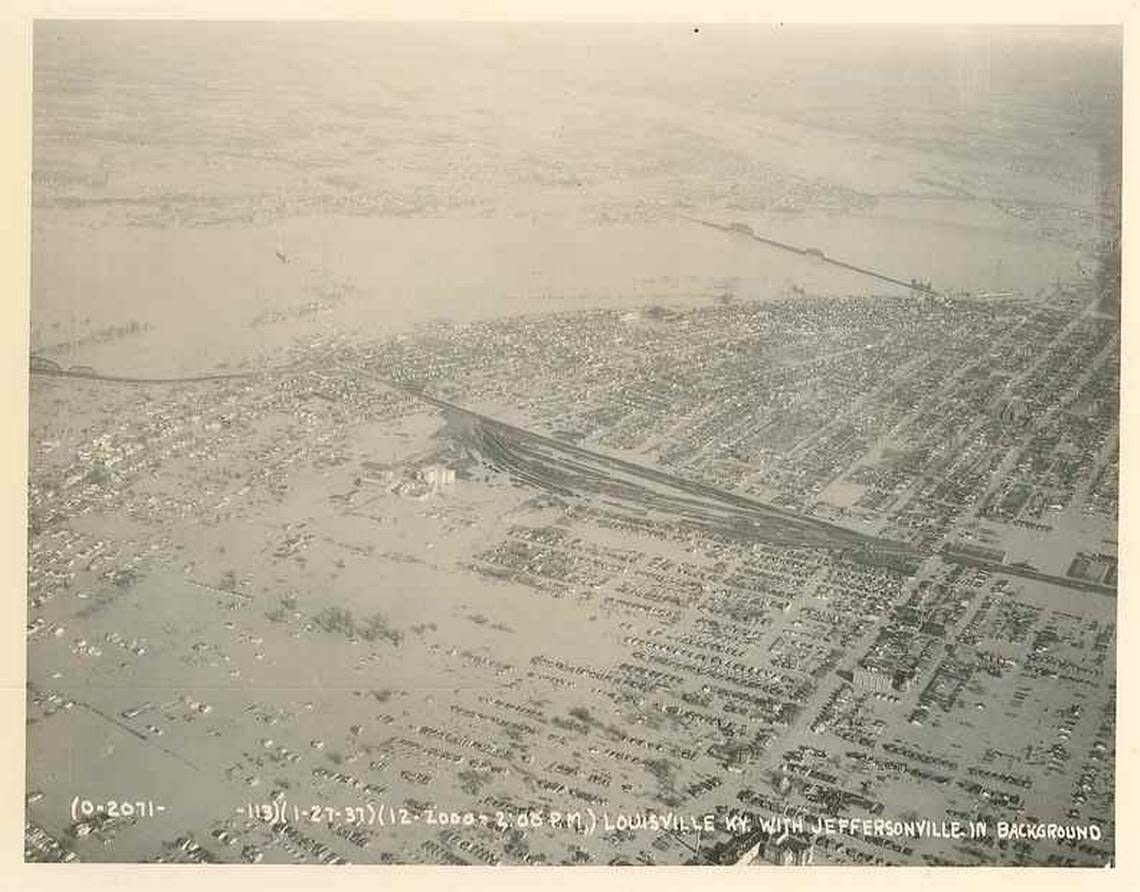
Accounts of the number of people who died from drowning or exposure varied. The American Red Cross said in a report that 137 people died in nine states, 22 of them in Kentucky, according to an Associated Press story, but other reports placed the number in Kentucky and the region higher.
One of those who died was Sgt. Thomas Brown of Madisonville, a National Guard soldier whose small boat sank while assessing flood damage.
Other cities on the Ohio River, including Paducah, were inundated, and there also was flooding on the Kentucky, Barren and Green rivers.
One report said half of Frankfort was covered by water, causing significant damage and reportedly sparking a riot by panicked inmates as flooding threatened a state prison. The National Guard report said 12 prisoners died.
July 1939
A cloudburst overnight on July 4 and 5 created “catastrophic flash flooding” in Eastern Kentucky as water cascaded off the hillsides, according to a National Weather Service report.
The U.S. Geological Survey, which studied the flood, said that while reliable measurements were not available, it estimated based on descriptions by residents that rainfall exceeded 12 inches and may have approached 20 inches at the center of the storm.
There were estimates that the water in Frozen Creek, in Breathitt County, rose 20 feet in 10 minutes, the USGS report said.
Residents described the rapid rise variously as “an approaching wall of water which billowed up like clouds,” “a 15-foot wall of water crashing down the valley,” or “like thunder with livestock, pieces of houses, and countless other things all being whirled together on the breast of the torrent as if in a great mixing pot.”
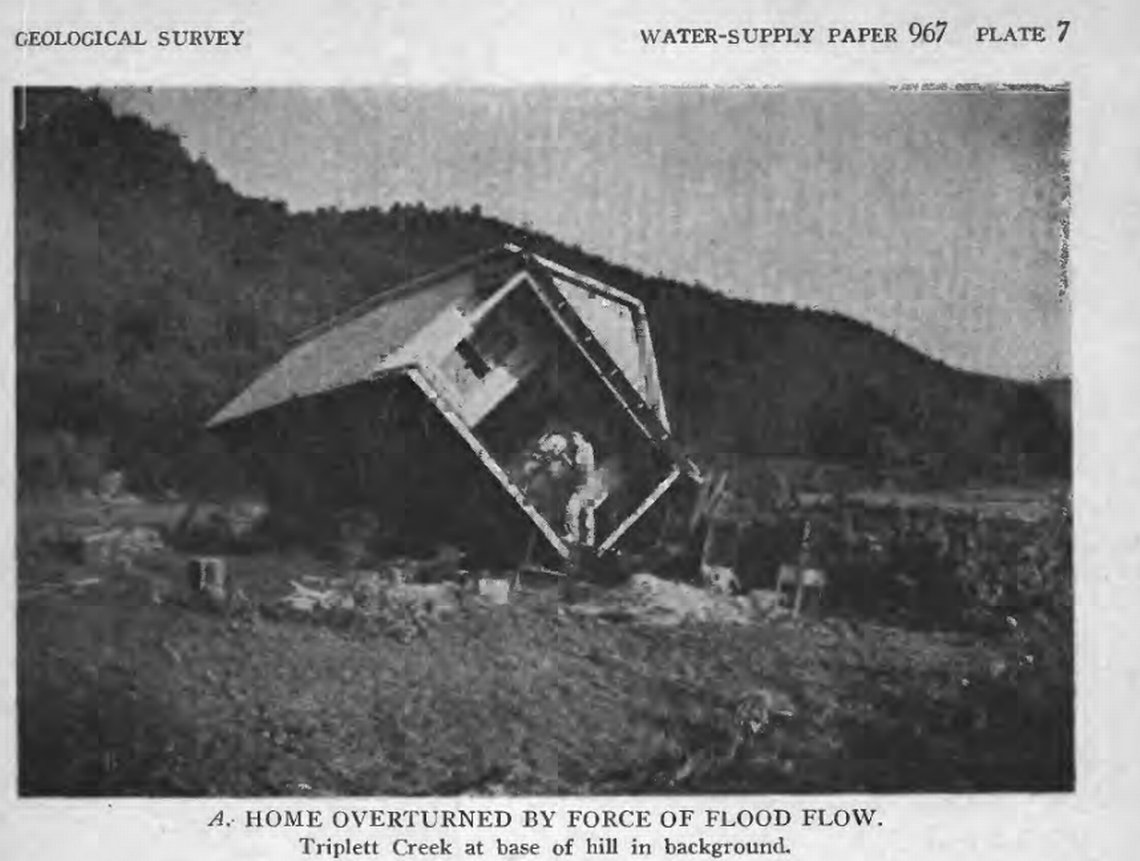
The flooding affected more than 20 counties, but Breathitt and Rowan counties were hit the hardest.
In Breathitt County, the flood destroyed the Kentucky Mountain Bible Institute, 44 houses and 60 barns, and 200 structures were reported damaged or destroyed in Morehead, the weather service said.
The Red Cross said 79 people were killed — 52 in Breathitt County, 25 in Rowan County and two in Lewis County, according to the weather-service report.
January — February 1957
The massive flood of early 1957 in Eastern Kentucky and nearby areas of Appalachia held the record in many spots for decades.
Rain fell nearly continuously in the area for around 60 hours from Jan. 27 to Jan. 29, according to the National Weather Service.
Flooding and landslides destroyed or blocked dozens of roads, and food shortages developed because of damage to stores, the U.S. Geological Survey (USGS) said in a report.
The American Red Cross reported that 597 homes were destroyed, 2,932 were badly damaged and nearly 8,800 more suffered some damage. Most of the coal mines in Pike, Floyd, Letcher, and Perry counties had to close, putting people out of work.
At Pikeville, the Levisa Fork rose from 18 feet on Jan. 29 to 52.7 feet by early the next day. Floodwater reached a depth of 9 feet some places in town and police estimated 400 cars were underwater, according to the USGS report.
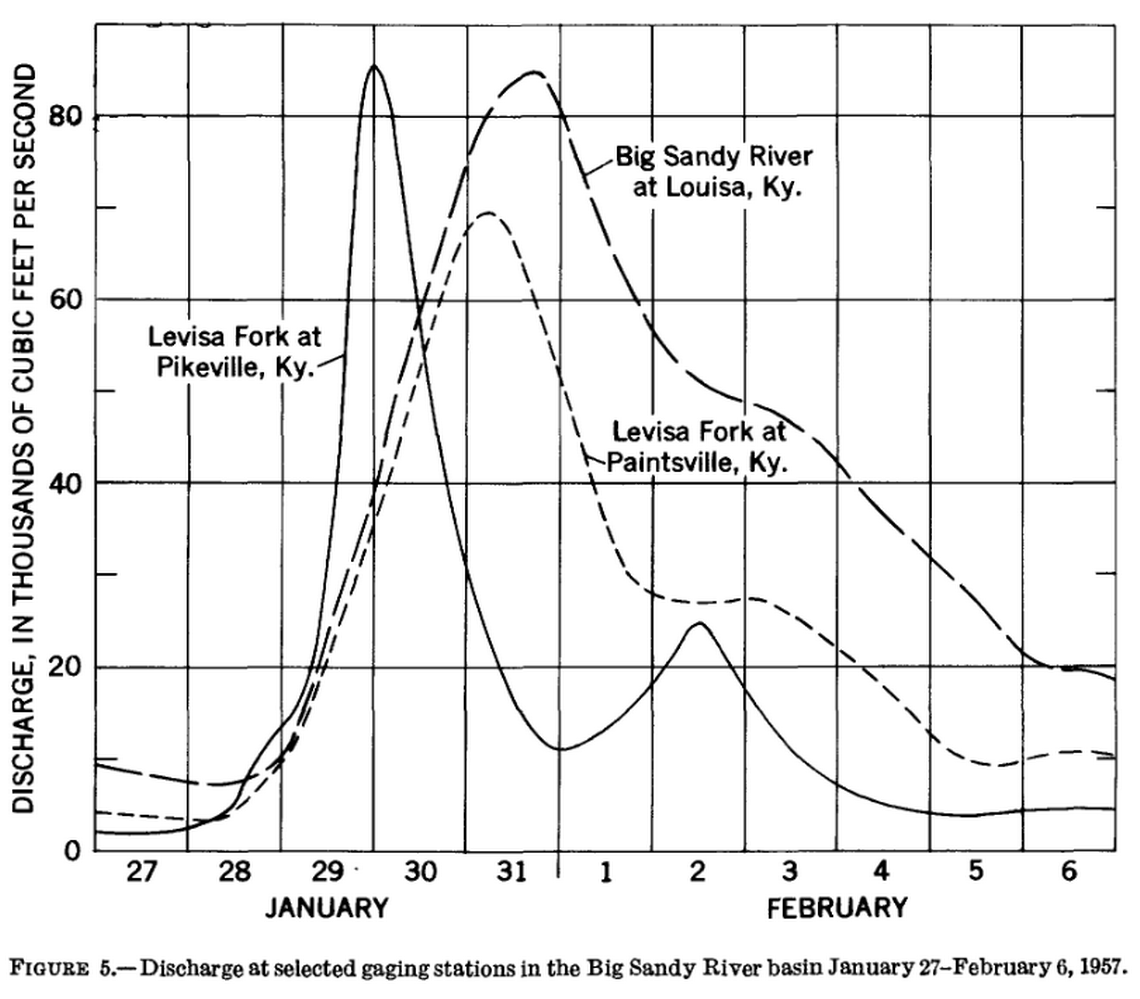
In Hazard, water was up to 17 feet deep in downtown. All roads into the city were blocked and all utilities were knocked out.
The late Bill Gorman, who was mayor of Hazard for many years, told WYMT-TV for a documentary on the flood that residents initially thought the river would stop rising.
“But it just kept coming and kept coming and kept coming,” Gorman said.
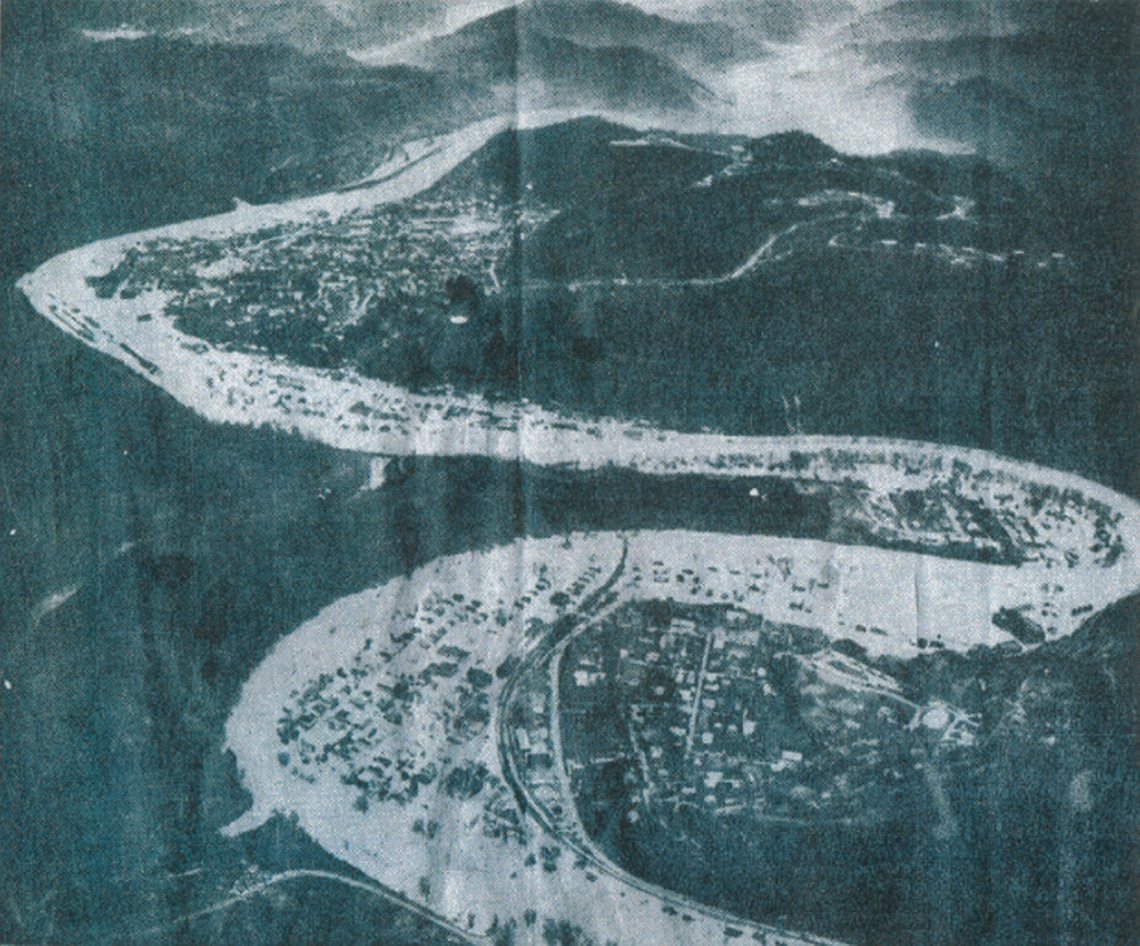
Three people in the Hazard area drowned or died of exposure, and an elderly couple died near town when a house where they’d taken refuge caught fire, the report said.
Altogether, nine people died in Eastern Kentucky, the USGS report said.
April 1977
Torrential rains from April 2-5 caused devastating flooding in southeastern Kentucky and nearby areas of West Virginia, Virginia and Tennessee, according to the National Weather Service.
The flood caused major damage on the Upper Cumberland River, and along the Tug Fork, tributaries of the Big Sandy and the North Fork of the Kentucky River.
Officials estimated the damage in Kentucky alone at more than $100 million, the equivalent of nearly half a billion dollars now.
The flooding killed 10 people in Kentucky and a total of another 12 in the other three states.
The flood helped make the case for a series of flood-control projects along the Cumberland River.
March 1997
Heavy rain in Kentucky and southern Indiana caused flooding on the Ohio River and others. Water reached the rooftops at Boston, in Nelson County, and 50,000 houses were affected in Louisville, according to the National Weather Service.
Disaster declarations were issued for more then 90 Kentucky counties, and damage throughout the region was estimated at about $400 million.
One National Weather Service report put the death toll in Kentucky at 19, though another had it at 16.
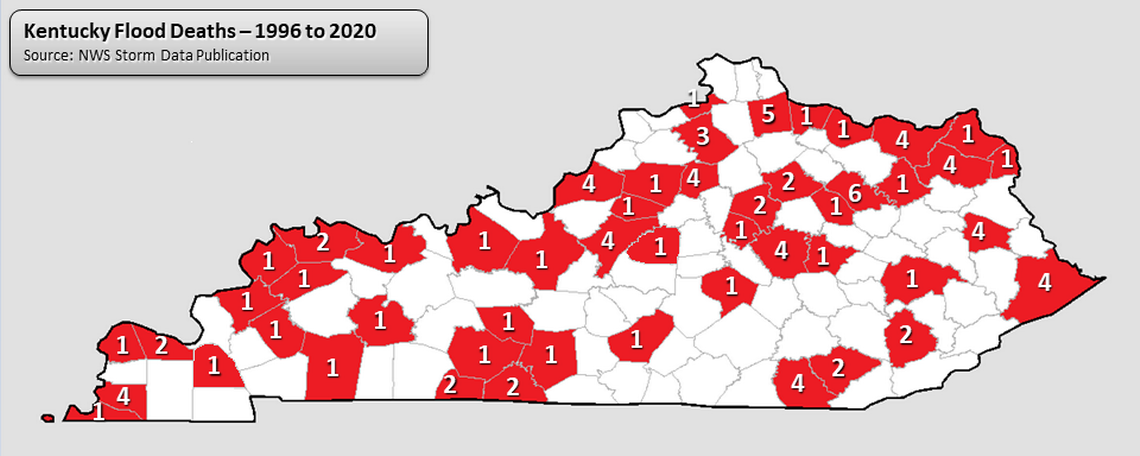
Those who died included a 13-year-old boy trying to help his father clean out a culvert in Shelby County; a 16-year-old boy in Jefferson County whose van was swept away; and a 50-year-old man whose car got stuck as he tried to cross a flooded creek in Franklin County, then drowned as he tried to swim to safety.
